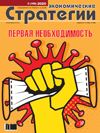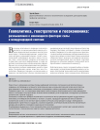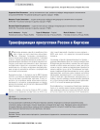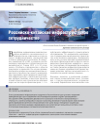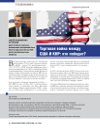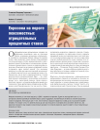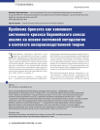Геополитика, геостратегия и геоэкономика: размышления о меняющихся факторах силы в международной системе
DOI: 10.33917/es-3.169.2020.30-41
Начав статью с напоминания некоторых базовых дефиниций геополитики, соотношения в ней пространственных и временных составляющих и системности геополитики как науки и основы долгосрочной политической стратегии, автор переходит к теме взаимосвязи геополитики и геоэкономики, особенно ощутимой в последние десятилетия.
Развивается идея о том, что геоэкономика представляет собой сегодня все более динамичный и активно движущийся элемент в этой диаде в силу нарастающих технологических инноваций, роста конкуренции и последующего усложнения экономических стратегий государств.
Основываясь на известных примерах экономических и политических итогов применения моделей государственного капитализма, или либеральной экономики, в частности, в странах, прошедших кардинальную ломку их прежних экономических систем (в этом контексте кратко упомянута и Россия), автор приходит к выводу о необходимости формирования стратегического государства, способного выработать устойчивый механизм (включая экономическую разведку) для разработки и проведения национальной геоэкономики. В подтверждение выдвинутых в статье положений автор в качестве независимого эксперта дает широкий набросок геополитических и геоэкономических сдвигов в мире в грядущие десятилетия
Источники:
1. Luttwak E. From Geopolitics to Geoeconomics: Logic of Conflict, Grammar of Commerce. The National Interest, 1990, no 20, pp. 17–24.
2. Jean C. Manuale di geopolitica. Roma — Bari, Editori Laterza, 2003, p. 93.
3. Csurgai G. Geopolitical Analysis: A Multidimensional Approach to Analyze Power Rivalries in International Relations. Rome, Aracne Editrice, 2019.
4. Claval P. Géopolitique et Géostratégie. Paris, Nathan, 1994, p. 6.
5. Foucher M. Fronts et Frontières. Paris, Fayard, 1991, p. 37.
6. Gray C.S. Incapable Geography. In Gray , Colin S. & Sloan, Geoffrey (Eds), Geopolitics, Geography and Strategy. London, Frank CASS Publishers, 1999, p. 161.
7. Blackwill R.D., Harris J.M. War by Other Means, Geoeconomics and Statecraft. Cambridge: Harvard University Press, 2016, p. 20.
8. Luttwak E. From Geopolitics to Geoeconomics: Logic of Conflict, Grammar of Commerce. The National Interest, 1990, no 20.
9. Lorot P., ed. Introduction à la g éo économie. Paris, Economica, 1999, p. 15.
10. Blackwill R.D., Harris J.M. War by Other Means. Geoeconomics and Statecraft. Cambridge, Massachusetts: Council on Foreign Relations, The Belknap Press of Harvard University Press, 2016, p. 20.
11. Trade value. Bureau of Trade Statistics of Taiwan, available at: https://cus93.trade.gov.tw/FSCE030F/FSCE030F.
12. List F. National System of Political Economy. New York, Cosimo Classics, 2013.
13. Bolsinger E. The Foundation of Mercantile Realism Friedrich List and the Theory of International Political Economy. Paper presented at the University of Lincoln, 2004.
14. Miller E.S. Bankrupting the Enemy: The U.S. Financial Siege of Japan before Pearl Harbor. Annapolis, MD, United States Naval Institute Press, 2007.
15. Mello P.A. Democratic Peace Theory, in The SAGE Encyclopedia of War. Social Science Perspectives, Paul Joseph (Ed.), Sage Publications, 2017, available at: http://dx.doi.org/10.4135/9781483359878.n188.
16. Elman C. Introduction: History, Theory, and the Democratic Peace. The International History Review, 23:4, Routledge, 2001, available at: http://dx.doi.org/10.1080/07075332.2001.9640946.
17. Blackwill R.D., Harris J.M. War by Other Means. Geoeconomics and Statecarft. Council of Foreign Relations, The Belknap Press of Harvard University Press, Cambridge, Massachusetts, 2016.
18. Gaiser L. Economic Intelligence and World Governance. Reinventing States for a New World Order, Il Cerchio, Citta di Castello, 2016, pp. 177–186.
19. World military expenditure grows to .8 trillion in 2018. Stockholm International Peace Research Institute, available at: https://www.sipri.org/media/press-release/2019/world-military-expenditure-grows-18-trillion-2018.
20. SIPRI Yearbook: Armaments, Disarmament and International Security. Stockholm International Peace Research Institute, available at: https://www.sipri.org/yearbook.
21. China vs United States — A GDP Comparison. MGM Research. 2018, December, 21, available at: https://mgmresearch.com/china-vs-united-states-agdp-comparison/
22. Davidson P. China, India close gap with U.S. as world’s top economy. USA Today, 2019, January, 11, available at: https://eu.usatoday.com/story/money/2019/01/11/china-india-gain-us-worlds-top-economy/2551849002/
23. The Long View. How will the global economic order change by 2050? PWC, available at: https://www.pwc.com/gx/en/world-2050/assets/pwc-world-in2050-summary-report-feb-2017.pdf.
24. GLOBAL 2000. The World’s Largest Public Companies. Forbes, 2019, May, 15, available at: https://www.forbes.com/global2000/#7161a2a9335d.
25. United Nations, Department of Economic and Social Affairs, Population Division (2019). World Population Prospects 2019. Data Booklet (ST/ESA/SER.A/424).
26. A New Version of World Map Published. Institute of Geodesy and Geophysics Chinese Academy of Sciences, available at: http://english.whigg.cas.cn/ns/es/201312/t20131211_114311.html.
27. Spykman N.J. America’s Stragegy in World Politics, The United States and the Balance of Power. New York, Harcourt Brace and Co, 1942.
28. Khana P. The Future is Asian, Global Order in the 21st Century. London, Weidenfeld Nicolson, 2019, p. 321.
29. Lambert A. China’s Belt and Road Initiative in a New Era of Geoeconomic Rivalries. Conference Paper, GIGS (Geneva Institute of Geopolitical Studies) Summer Course “Geopolitics” 2019.
30. Kirsch H. (Ed.) La France en guerre économique. Plaidoyer pour un Etat stratége. Paris, Vuibert, 2008.
31. Harbulot Ch. La Machine de Guerre Economique. Paris, Economica, 1992.
32. Harbulot Ch. La Main invisible des puissances. Paris, Ellipses, 2007.
33. Harbulot Ch. Manuel d’intelligence économique. Paris, PUF, 2015.
34. Vogel E.F. The Four Little Dragons: The Spread of Industrialization in East Asia. Cambridge, MA, Harvard University Press, 1993.
35. Young-Iob Chung. South Korea in the Fast Lane: Economic Development and Capital Formation. Oxford University Press, Oxford, New York, 2007.
36. Csurgai G. “Geoeoconomic Strategies and Economic Intelligence” in Advances in Geoeconomics. London, New York, Ed. J.M. Munoz, Routledge, 2017.
37. Jean С., Savona P. Intelligence Economica. Rubettino, Soveria Mannelli, 2011, p. 21.
38. Pierucci F. Le piège am éricain. Paris, Editions JC Latt ès, 2019.


